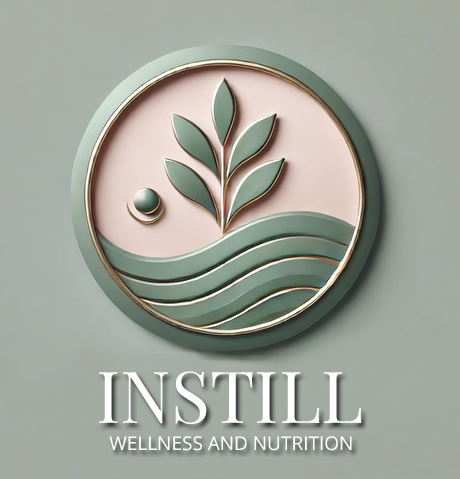In the world of functional health, we often talk about looking beyond the surface to understand the root causes of health issues. When it comes to aging, there’s a fascinating cellular process that’s been getting a lot of attention lately. It’s all about something called cellular senescence, and it might just be the key to unlocking a new level of vitality as we age.
Imagine your body as a bustling city. Over time, some of the “buildings” (our cells) start to wear out. In a perfect world, these old structures would be torn down to make way for new, functional ones. But sometimes, these worn-out cells stick around, refusing to be cleared away. We call these lingering troublemakers “senescent cells” or, more colorfully, “zombie cells.”
These zombie cells aren’t just passive bystanders in our body’s urban landscape. They actively cause problems by releasing inflammatory substances, kind of like a neglected building that’s constantly setting off false fire alarms and disturbing the whole neighborhood. This ongoing cellular commotion can lead to a host of issues we typically associate with aging: wrinkles, fatigue, joint pain, and even more serious age-related diseases.
But here’s where it gets exciting: emerging research suggests that we might be able to help our bodies clear out these problematic cells, potentially slowing down or even reversing some aspects of the aging process.
The Zombie Cell Invasion: Understanding Cellular Senescence
As we journey through life, our bodies accumulate an increasing number of senescent cells. These cells, which have ceased to divide and function properly, become a burden on our cellular communities. They release harmful chemicals known as the senescence-associated secretory phenotype (SASP), triggering chronic inflammation and accelerating the aging process [1].
Think of SASP as toxic waste that these zombie cells are dumping into our body’s ecosystem. Over time, this cellular pollution can overwhelm our natural cleanup systems, leading to a cascade of age-related issues. It’s like trying to keep a city clean when there’s litter everywhere – eventually, the whole place starts to look and feel run-down.
Nature’s Cleanup Crew: Senolytic Superstars
Fortunately, Mother Nature has provided us with an impressive arsenal of compounds known as senolytics – natural substances that can selectively target and eliminate senescent cells. It’s as if we’ve discovered a specialized team of eco-friendly waste management experts for our cellular city. Let’s explore some of these natural senolytic superstars:
1. Quercetin: This flavonoid, found in apples, onions, and green tea, is like a skilled negotiator, convincing zombie cells to peacefully exit our cellular community. Studies suggest that quercetin can trigger the self-destruction of senescent cells while leaving healthy cells unharmed [2].
2. Fisetin: Abundant in strawberries and other fruits, fisetin acts as a powerful antioxidant with impressive senolytic effects. Think of it as a superhero that swoops in to neutralize the toxic SASP and escort zombie cells out of the body. Research indicates that fisetin can improve health and extend lifespan in animal models [3].
3. Curcumin: The active compound in turmeric, curcumin has been revered in Ayurvedic medicine for centuries. In our cellular city, curcumin works like a master planner, helping to eliminate senescent cells and reduce overall inflammation. Recent studies show promising results in its ability to combat cellular aging
Lifestyle Practices: Renovating Your Cellular City
While incorporating these natural compounds into your diet is crucial, true cellular rejuvenation requires a holistic approach. Think of these lifestyle practices as a comprehensive urban renewal project for your body:
1. Intermittent Fasting: Periods of fasting can trigger autophagy, your body’s cellular cleanup process. It’s like giving your cellular city regular street sweeping days, clearing out damaged components and promoting overall health [5].
2. High-Intensity Interval Training (HIIT): Short bursts of intense exercise followed by rest periods can stimulate the production of new, healthy cells while encouraging the elimination of senescent ones. It’s like a revitalization project that tears down old structures and builds shiny new ones in their place.
3. Cold Exposure: Regular cold showers or cryotherapy sessions can activate your body’s stress response, promoting cellular resilience. Think of it as a citywide fire drill that keeps all your cellular systems alert and functioning optimally.
4. Stress Reduction: Chronic stress can accelerate cellular aging. Practicing mindfulness is like implementing noise reduction policies in your cellular city, creating a calmer, more harmonious environment for all your cells to thrive in.
5. Quality Sleep: During deep sleep, your body undergoes crucial repair processes. Prioritize 7-9 hours of uninterrupted sleep in a cool, dark room. It’s like giving your cellular city a nightly maintenance schedule, ensuring everything is in top shape for the next day.
Putting It All Together
By taking advantage of the power of natural senolytics and adopting a lifestyle that supports cellular renewal, you can tap into your body’s innate ability to rejuvenate itself.
True ageless vitality isn’t about chasing eternal youth – it’s about nurturing your body’s wisdom and allowing it to thrive at any age. And in the end, managing your cellular health is about creating a thriving, balanced ecosystem within your body. By combining nature’s wisdom with modern scientific understanding, we can work towards a future where aging is not about decline, but about continuous renewal and vitality.
References:
1. Xu, M., et al. (2018). Senolytics: A new therapeutic avenue for aging-related diseases. Trends in Pharmacological Sciences, 39(8), 734-747.
2. Xu, M., et al. (2018). Senolytics: A new therapeutic avenue for aging-related diseases. Trends in Pharmacological Sciences, 39(8), 734-747.
3. Yousefzadeh, M. J., et al. (2018). Fisetin is a senotherapeutic that extends health and lifespan. EBioMedicine, 36, 18-28.
4. Bielak-Zmijewska, A., et al. (2019). The role of curcumin in the modulation of ageing. International Journal of Molecular Sciences, 20(5), 1239.


